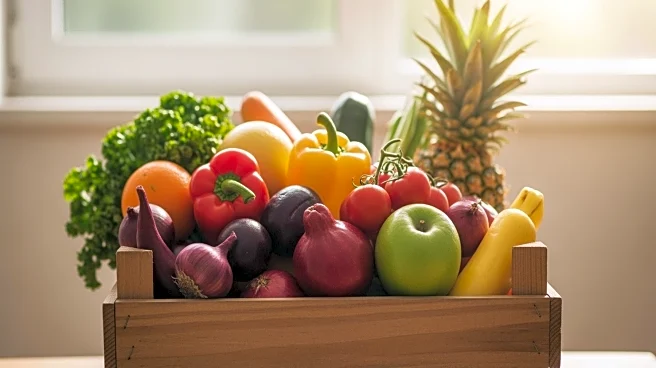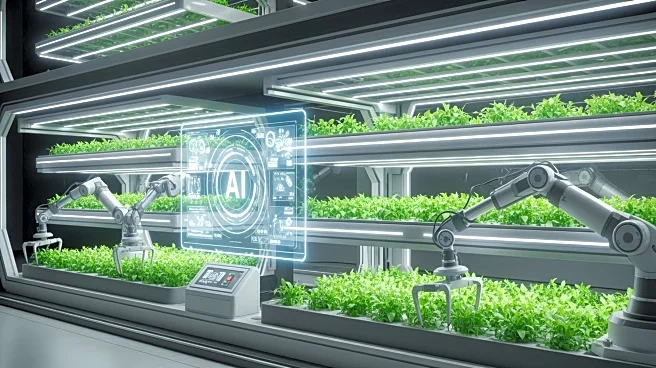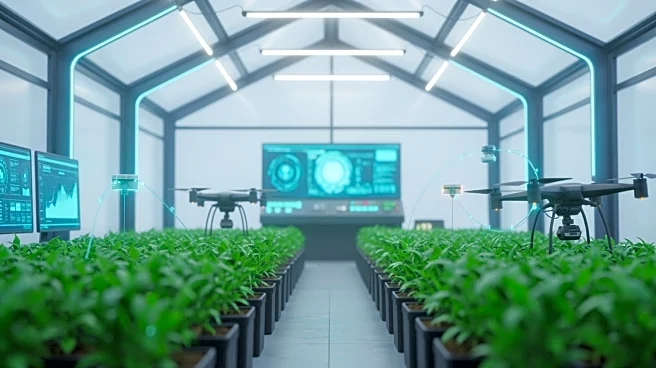What's Happening?
San Luis Obispo County has reported agricultural production exceeding $1 billion for the fourth consecutive year, as detailed in the 2024 Annual Crop Statistics. Despite an 8% decline in overall crop value compared to 2023, the county's agricultural sector
remains robust. The report highlights the resilience of local farmers and the diversity of over 100 crop types as key factors in sustaining the sector's strength. Strawberries emerged as the top commodity, while avocados and lemons saw significant value increases of 64% and 95%, respectively. However, wine grapes experienced a 40% drop in value due to weaker sales. The animal sector also performed well, with a 3% increase in the number of cattle sold and a 12% rise in cattle prices. Field crops had mixed results, with alfalfa hay production increasing by 36% and its value rising by 43%.
Why It's Important?
The continued success of San Luis Obispo County's agricultural sector is crucial for the local economy, providing stability and growth opportunities despite challenges such as market demand changes and international competition. The sector's diversity and resilience are vital in maintaining its economic contribution, supporting local jobs, and sustaining the community's cultural heritage. The strong performance of certain commodities, like strawberries and avocados, highlights the potential for targeted growth areas, while the decline in wine grape values underscores the need for strategic adjustments in response to market trends. The agricultural sector's ability to adapt to environmental conditions and market shifts is essential for its long-term sustainability.
What's Next?
Looking ahead, San Luis Obispo County's agricultural sector may need to focus on diversifying its crop portfolio further and exploring new markets to mitigate the impact of declining values in certain commodities like wine grapes. Continued investment in sustainable farming practices and technology could enhance productivity and resilience against environmental challenges. Stakeholders, including local government and agricultural organizations, may consider initiatives to support farmers in navigating market fluctuations and increasing international competition. Monitoring consumer demand trends and adjusting production strategies accordingly will be crucial for maintaining the sector's economic viability.
Beyond the Headlines
The agricultural sector's performance in San Luis Obispo County reflects broader trends in the U.S. agriculture industry, where climate variability and market dynamics play significant roles. The county's experience underscores the importance of adaptive strategies and innovation in agriculture to ensure food security and economic stability. The emphasis on sustainability and resilience in farming practices could serve as a model for other regions facing similar challenges. Additionally, the sector's success highlights the potential for agriculture to contribute to regional economic development and community well-being.













